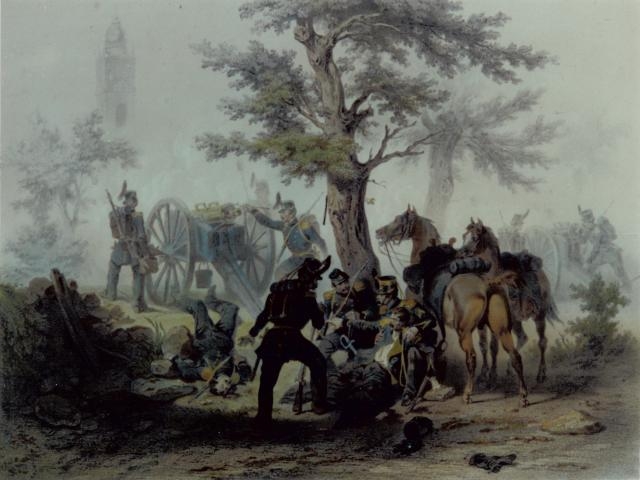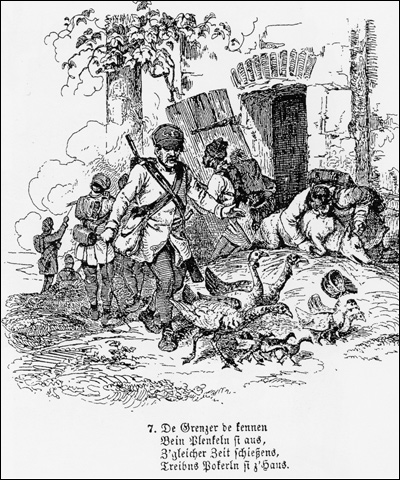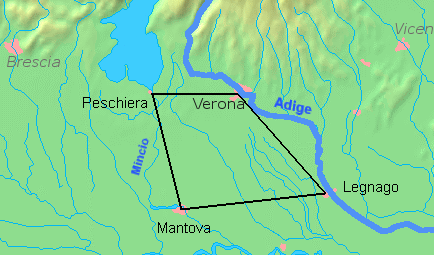
We got sidetracked after Pastrengo with the celebrations of Marengo for the 150th anniversary re-enactment of the battle but now we carry on as if nothing happened.After Pastrengo there was Santa Lucia
 . The Austrians fell back on Verona: it was a good position, they could come out at any time to harry the Piedmonts and thus keep Rivoli safe (this was vital to supplies from Vienna).
. The Austrians fell back on Verona: it was a good position, they could come out at any time to harry the Piedmonts and thus keep Rivoli safe (this was vital to supplies from Vienna). The fort at Peschiera was blocked by Charles Albert's troops so Verona was the key. It was too strong for him to take so he decided to fight an action in front of its walls.
The fort at Peschiera was blocked by Charles Albert's troops so Verona was the key. It was too strong for him to take so he decided to fight an action in front of its walls.  This was the Battle of Santa Lucia. Santa Lucia was then a village outside the city but is now a suburb of Verona.
This was the Battle of Santa Lucia. Santa Lucia was then a village outside the city but is now a suburb of Verona.
It is the saddest battle of all, sad that it revealed the cause of Italy, a united Italy to be useless, hopeless.It showed the widespread ineptitude of Italian senior officers and therefore a waste of manpower in the ranks below.

Verona at the time had 52,ooo people.
It lies on the Adige as if in a loop facing West with both ends resting on the river. It bristled with "guns" on the ramparts but a mile and a quarter outside the walls there was another strong line of defence known as the Rideau. This needs explanation.

To visualise the Rideau let us imagine ourselves to be Piedmontese officers marching towards Verona. When we arrive at 3,000 yards from the City we are confronted by and standing on the edge of a vast quarry, fifty feet deep with a circumference of five miles
 . When we halt here we look down onto Verona. From where we stand we can rain continuouys fire down into Verona without much comeback. The Rideau is a natural line of attack BUT also defence..
. When we halt here we look down onto Verona. From where we stand we can rain continuouys fire down into Verona without much comeback. The Rideau is a natural line of attack BUT also defence..
If the Italians occupied these elevated positions Verona was doomed so the great Radetsky put up fortifications in front of it. Verona , it was said, was ready to rise against Radetsky but only if Piedmont
 attacked
attacked











lw!2k~%24(KGrHgoOKjwEjlLmVD,kBKMjDIiuPQ~~_1.jpg)




































